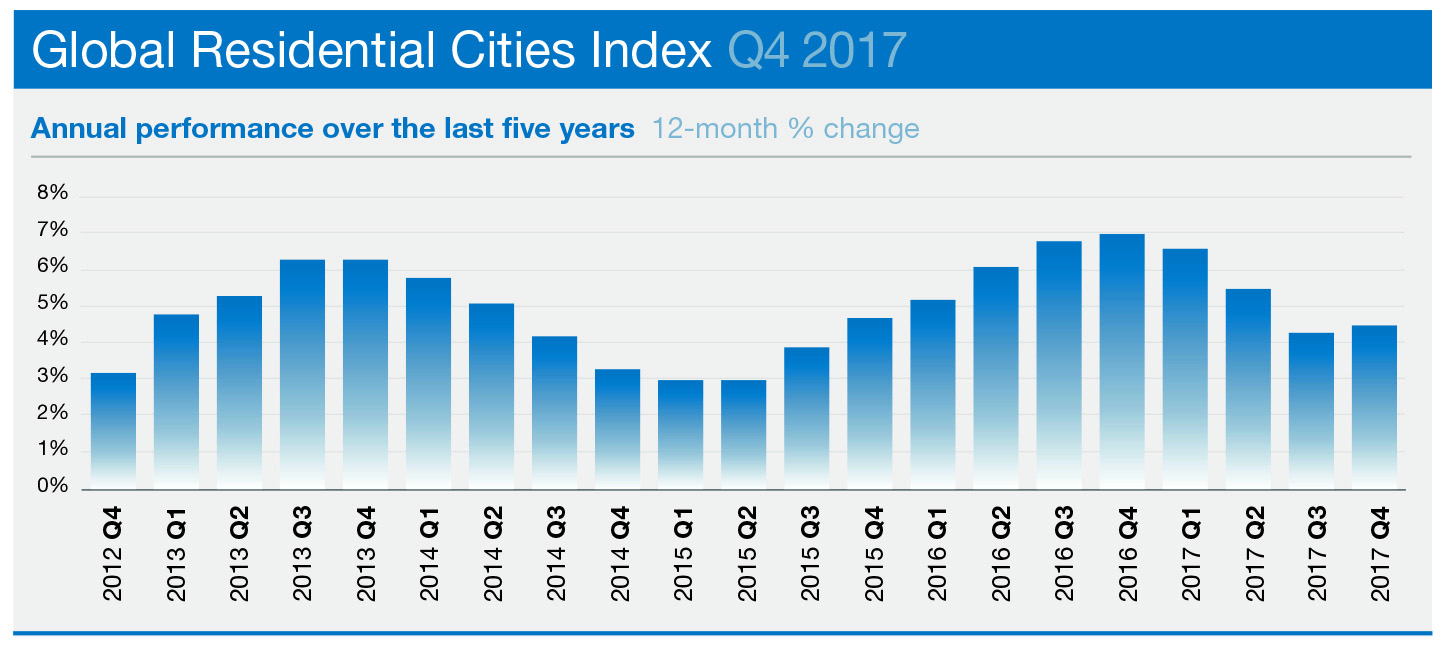Latest News
Berlin bucks global trend as urban house price growth slows
June 6th 2019
By Knight Frank
 In 2017 the index averaged growth of 4.5%, a year earlier this figure was closer to 7%.
In 2017 the index averaged growth of 4.5%, a year earlier this figure was closer to 7%.
With fiscal stimulus being withdrawn, capital controls in place in China, and the beginning of a shift towards the normalisation of monetary policy, annual price growth above 20% is now confined to only a few outliers.
At the end of 2016, 12 cities, most of them Chinese, registered price growth above 20%, a year later only one city falls into this category; Berlin.
Germany’s capital leads the rankings with prices ending the year 21% higher. Strong population growth, a stable economy, record low unemployment and robust interest from overseas investors are together propelling prices higher.
As housing markets become more transparent and new official indices are published we review the composition of the index to optimise our city coverage. This quarter marks the inclusion of German cities for the first time.*
The slowdown in Chinese cities in 2017 had a marked influence on the index’s overall performance. In 2016, the 15 Chinese cities tracked by the index averaged 23% growth year-on-year. In 2017, the same 15 cities averaged 1.6% growth. Chongqing is now the frontrunner, with previous hot markets such as Shenzhen and Beijing slipping down the rankings.
Analysis on a country-by-country basis shows Iceland was home to the strongestrising urban house prices and Peru the weakest in 2017.
When looking at the most improved markets in 2017, Seville and Hong Kong lead the way, with annual price growth shifting from -9.9% to 7.4% and from 4.3% to 14.8% respectively over the 12-month period (figure 3).
Despite four interest rate rises in the last 18 months house prices in US cities are accelerating. Across the 15 US cities tracked, prices rose 6.3% on average in 2017. Seattle and San Francisco are out in front, prices ended the year 12.7% and 9.3% higher respectively.
Vancouver rebounded from 21st to fourth place this quarter as supply shortages reignited price growth. The 15% foreign buyer tax has influenced luxury prices more than the mainstream market but with a raft of new cooling measures announced following February’s Budget the city may yet see its rate of growth soften.
Results for Q4 2017
Average global prices increased by 4.5% in 2017, down from 7% a year earlier
Berlin led the annual rankings for 2017
Chinese cities registered a marked slowdown in 2017 averaging 1.6% growth
US cities averaged 6.3% growth in 2017, despite four rate rises since December 2016
Seville and Hong Kong stand out as the most improved markets in 2017